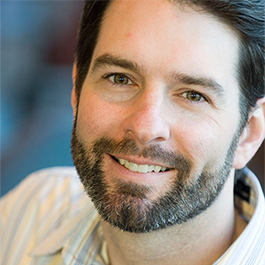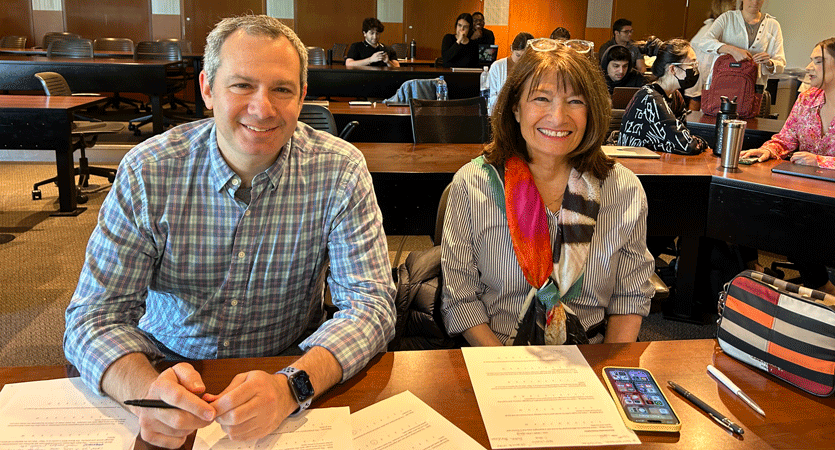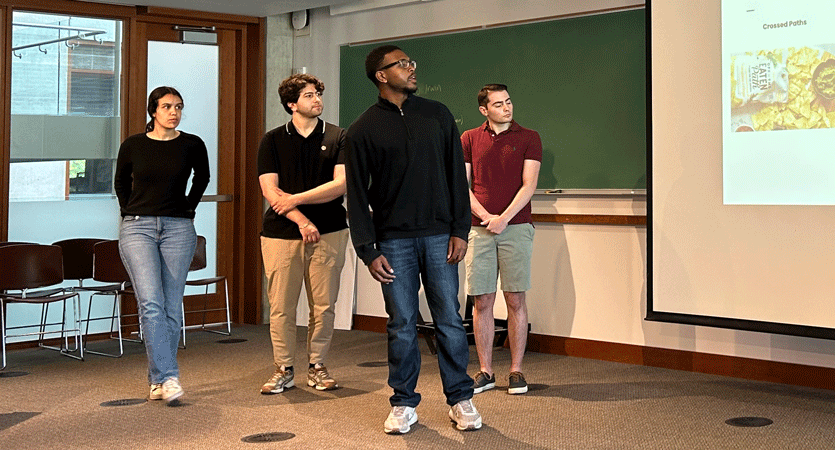To Stand Out, Build a Buzzworthy Brand
Even entrepreneurs with great ideas often find themselves in crowded markets, struggling to stand out.
But serial entrepreneur and Farley Center for Entrepreneurship and Innovation faculty member Mike Moyer believes there is one tool that startups can take advantage of right out of the gate: a buzzworthy brand.
 “Even when they can’t compete on price or technology, startups can get a strategic edge over the incumbents with a meaningful, differentiated brand,” he said. “It’s the easiest, cheapest, and fastest way to get noticed in a market.”
“Even when they can’t compete on price or technology, startups can get a strategic edge over the incumbents with a meaningful, differentiated brand,” he said. “It’s the easiest, cheapest, and fastest way to get noticed in a market.”
Moyer, who has founded several companies and has written books on finance and entrepreneurship, felt so strongly about this simple yet underutilized concept that he designed a new course for the Farley Center: Building a Buzzworthy Brand.
Held this spring, the course — available to both undergraduate and graduate students — paired student teams with small and mid-sized companies to assess their brand strength and provide recommendations for brand overhauls that could potentially accelerate growth and profitability.
To teach the class, Moyer was advised by Adrienne Weiss, founder of the Adrienne Weiss Corporation. With her business partner Greg, Weiss has created award-winning brand strategies for a wide range of companies, including Buid-A-Bear, Five Below, Disney, Coca-Cola, and Target. Moyer used Weiss’s strategies and his entrepreneurial experience to help teach students the essentials of branding.

“Startups and established companies need their products to be talked about,” Moyer said. “We teach a way to help students create a buzzworthy brand that starts a discussion.”
The biggest brand mistake that companies make, Moyer said, is to focus only on the rational elements of their brand (better, faster, cheaper). But customers fall in love with and remember the emotional elements of a brand first (think Apple’s sleek designs and joy-filled commercials), so any successful brand should focus on emotional characteristics before rational elements.
“Guts first, then brains,” Moyer said.
Moyer teaches Weiss’s rules that good brands should tell stories, build “clubs” of brand members, and then create language, rituals, and customs around that brand.
Finding nuggets to explore
In the class, students were taught the basics of branding, then were assigned to meet with their respective companies — which included a law firm, a cybersecurity firm, and a food company. Then, students evaluated their brands against those in their industry and developed new ideas to jumpstart those brands.
One student team worked with Off the Eaten Path, a healthy snack option within the Frito Lay company. The chip-like crisps are made with real vegetables, are baked instead of fried, and come in compostable bags.
Brett O’Brien, chief marketing officer for Frito-Lay, said he was excited about working with the students to see what they could come up with.
“The products taste great, and there are so many reasons to believe in them, but the brand has been kind of sleepy for us,” he said. “We think we’ve got a lot of great opportunities to grow it, and we wanted some new ideas on it.”
Cody Murray-Bruce (’24) and his teammates evaluated the brand against its competitors and ultimately came up with several ideas, including shortening the term Off The Eaten Path to OTEP (to align with the brand rules of having a short word as the title). They also thought the brand should highlight its story and mission more, to focus on why potential customers would want to be part of its “club.” The team also hired a designer to redesign the bag with more green color to represent adventure and a path to represent the journey customers embark on when they eat the crisps.

“The most important lesson I learned about branding in this class is that there are always little nuggets one can find in a brand that need more exploring,” Murray-Bruce said. “The best ideas aren’t always the most grand and different, but oftentimes they are the ones that customers are familiar with and would love to be explored further.”
O’Brien was impressed with the students’ work, especially their competitive analysis and surveying students around campus.
“They’ve been great to work with,” he said. “The suggestions were well researched, creative, consumer vetted — and perhaps most important — actionable.”
Other student team ideas included creating a comic book character for the cybersecurity firm and designing branded T-shirts for the law firm that emphasize their personal relationships with clients. Moyer hopes the companies can take the students’ ideas and run with them, and he hopes that students can use the skills they’ve learned, whether they become entrepreneurs or not.
“Even if they join an established company, students can assess if that company’s brand is strong or not,” Moyer said. “Once you can define the rules, you can break those rules and redefine whatever it is you’re marketing.”
